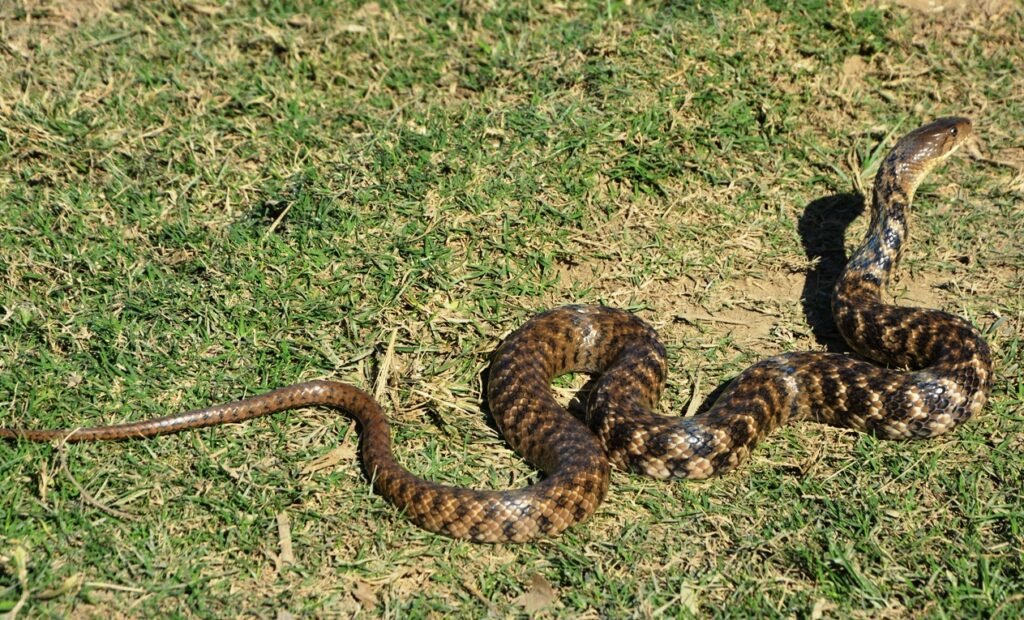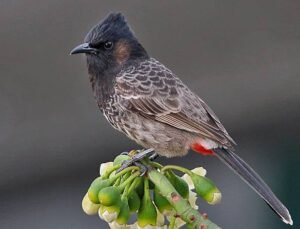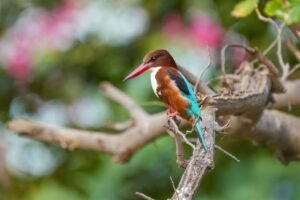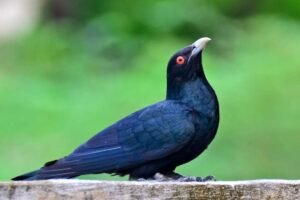The Checkered Keelback Snake, also known as the Asiatic Water Snake, is a fascinating non-venomous reptile that is often found near water bodies across South and Southeast Asia. This snake species is known for its docile behavior, beautiful checkered pattern, and adaptability to various environments. Despite its intimidating appearance, the Checkered Keelback is harmless to humans and plays a vital role in maintaining aquatic ecosystem health by preying on fish and amphibians. Because of its wide distribution and visibility, it is commonly mistaken for venomous snakes, which unfortunately results in unnecessary killings. By educating people about the Checkered Keelback, we can promote conservation awareness and reduce human-snake conflicts.

Checkered Keelback Snake
Species Profile – Checkered Keelback Snake (Tabular Format)
| Category | Details |
|---|---|
| Snake Name | Checkered Keelback Snake |
| Scientific Name | Fowlea piscator (formerly Xenochrophis piscator) |
| WLPA Schedule | Not listed under Schedule I; general protection applies |
| Regional Names | Hindi – Jal Samp / Paniwala Saap (जल संप / पानीवाला साँप), Marathi – Pandiwad / Paaniwala Naag (पांडिवड / पाणिवाला नाग), Gujarati – Paani Na Saanp (પાણી નું સાપ), Bengali – Jal Shap (জল সাপ), Assamese – Pani Sopt (পানী সাপ), Punjabi – Paniwala Samp (ਪਾਣੀ ਵਾਲਾ ਸੰਪ), Tamil – Neer Pambu (நீர் பாம்பு), Telugu – Neeti Paamu (నీటి పాము), Kannada – Neeru Havu (ನೀರು ಹಾವು), Malayalam – Vellam Paambu (വെള്ളം പാമ്പ്), Odia (Oriya) – Pani Sapa (ପାଣି ସାପ), Urdu – Aabi Saamp (آبی سانپ), Konkani – Udakcho Sorp (उदकचो सर्प), Sanskrit – Jal Naga (जल नाग). |
| Physical Description | Medium-sized snake, olive green to brown with dark checkered patterns. Flattened head, round pupils, keeled scales. 1 to 1.5 meters in length. |
| Habitat | Prefers freshwater bodies like lakes, ponds, rivers, irrigation canals, paddy fields. |
| Diet | Feeds mainly on fish, frogs, tadpoles, small aquatic creatures. |
| Behaviour | Diurnal, calm but may hiss or flatten body when threatened. Excellent swimmer. |
| Venomous or Non-Venomous | Non-venomous |
| Venom Type | None |
| Venom Effects on Prey | Not applicable |
| Venom Effects on Humans | Not applicable |
| Common or Rare Species | Common and widely distributed |
| Life Span | Around 10–12 years in the wild |
| Mating & Reproduction | Oviparous; lays 6–40 eggs during monsoon. Eggs hatch in about 2 months. |
Introduction to Snakes – Checkered Keelback Snake
Snakes like the Checkered Keelback belong to the class Reptilia and are cold-blooded, legless reptiles. This particular snake possesses general characteristics such as a long cylindrical body, scaly skin, and a forked tongue used for sensing chemicals in its environment. The Checkered Keelback’s anatomy is designed for aquatic life, with strong swimming muscles and keeled scales that help it glide through water with ease. Unlike many venomous snakes, this species has round pupils and no heat-sensing pits.
In the ecosystem, snakes like the Checkered Keelback are crucial for controlling populations of fish, amphibians, and even insect larvae. This ecological role helps maintain the balance of aquatic habitats. They also serve as food for larger predators like birds of prey and larger mammals, making them an integral part of the food web.
Unfortunately, myths surround snakes in many cultures, such as the belief that all snakes are deadly. In truth, the Checkered Keelback is a non-venomous and relatively shy creature. Dispelling these myths can prevent unnecessary killings and promote coexistence with these beneficial reptiles.
Habitat and Distribution
The Checkered Keelback Snake thrives in freshwater habitats, making it a common resident of lakes, ponds, rivers, canals, marshes, and agricultural fields like paddy fields. It is semi-aquatic, meaning it spends much of its life in or near water. Its body structure, particularly its laterally flattened tail and keeled scales, allows it to swim with remarkable agility. This snake avoids dry areas and is rarely found in deserts or dense forests.
The Checkered Keelback is geographically distributed throughout India, Bangladesh, Sri Lanka, Nepal, Pakistan, Myanmar, Thailand, and some parts of Indonesia. It adapts well to human-dominated landscapes, especially near water sources, making it a common sight in rural and semi-urban areas. In India, this species is often spotted near water tanks, rice fields, and even drainage systems.
| Habitat Type | Found in Regions |
| Wetlands | Ponds, lakes, marshes |
| Rivers/Streams | Throughout South and Southeast Asia |
| Paddy Fields | India, Bangladesh, Sri Lanka |
| Irrigation Canals | Agricultural zones |
Its ability to coexist with human-modified environments makes it one of the most successful non-venomous water snakes in Asia.
Snake Behaviour
The Checkered Keelback exhibits interesting and adaptable behavioral traits. Primarily diurnal, it is active during the daytime, especially around dawn and dusk. This snake prefers warm environments and is often seen basking on rocks or grass near water sources. It is an excellent swimmer, and most of its hunting and feeding occurs in or near water.
As a predator, its feeding habits mainly include consuming fish, tadpoles, frogs, and occasionally crustaceans or insect larvae. It uses stealth and quick strikes to capture its prey. Although it doesn’t have venom, it relies on speed and jaw strength to hold slippery aquatic prey.
Mating occurs during the monsoon season. Males locate females using chemical cues and court them through body contact and coiling. The female lays eggs in moist areas like under rocks or vegetation. After an incubation period of about two months, the hatchlings emerge fully independent.
For defense, the Checkered Keelback may flatten its body and hiss loudly to intimidate threats. It may even mimic venomous snakes by raising its head and striking without biting. However, it rarely bites humans and usually attempts to flee. These behaviors make it a peaceful and ecologically important snake.
First Aid and Medical Treatment for Checkered Keelback Snake Bites
Since the Checkered Keelback is non-venomous, its bite is generally harmless. However, it may still result in minor wounds or infection due to bacteria in the snake’s mouth. In the rare event of a bite:
- Wash the area thoroughly with soap and clean water.
- Apply antiseptic to prevent infection.
- Do not panic, as no venom is injected.
- Seek medical help only if the wound shows signs of infection or swelling.
Antibiotics may be prescribed by a doctor if the wound becomes red or inflamed. Tetanus shots should be up to date.
Global Impact of Checkered Keelback Snake Bites
Globally, Checkered Keelback snakes are not known to cause significant medical issues or fatalities. Since they are non-venomous, their impact on human populations is negligible. In fact, their presence near water bodies helps reduce overpopulation of frogs and fish, indirectly benefiting agriculture and reducing mosquito-borne diseases.
If You Encounter a Snake on Your Property
- Remain Calm and Assess the Situation: Panicking can lead to accidents. Keep a safe distance and observe the snake’s behavior.
- Ensure Safety: Move pets and children indoors. Do not attempt to catch or kill the snake.
- Identify the Snake (If Possible): Try to remember its color, size, and pattern from a distance without going near.
- Contact Professional Help: Call local wildlife rescue or forest department to relocate the snake safely.
- Prevent Future Encounters: Clear clutter, seal water sources, and reduce rodent populations around your home.
- Educate Yourself and Others: Learning to differentiate between venomous and non-venomous snakes helps reduce fear and unnecessary killings.
Tips for Snake Enthusiasts
- How to Safely Observe Snakes in the Wild: Always observe from a distance using binoculars or a camera. Avoid touching or provoking snakes. Wear boots and stay alert when walking near water bodies or dense vegetation.
- Tips for Aspiring Herpetologists: Study snake behavior, habitats, and taxonomy. Volunteer with wildlife organizations, take field training, and follow safety protocols. Document observations and contribute to citizen science projects.
Interesting Facts about Checkered Keelback Snake
- The Checkered Keelback can hold its breath underwater for several minutes, making it an expert ambush predator in aquatic settings.
- It sometimes mimics venomous snakes by flattening its body and making a hissing sound when threatened.
- Checkered Keelbacks have been seen basking in groups, especially near irrigation canals, making them one of the few semi-social snake species.
- During the breeding season, males can be seen competing for females in what resembles a “dance,” though it’s actually a show of strength.
- The snake’s eyes have round pupils, which is a helpful identification feature for determining that it is non-venomous.
- It contributes to controlling disease-causing pests by preying on frogs that often host parasites.
Frequently Asked Questions (FAQ)
1. Is the Checkered Keelback Snake dangerous to humans?
No, the Checkered Keelback Snake is completely non-venomous and not dangerous to humans. It may bite if provoked, but the bite is harmless and rarely causes more than minor discomfort.
2. How can I identify a Checkered Keelback Snake?
Look for a medium-sized snake with an olive-green to brown body covered in dark checkered patterns. It has a flattened head, round pupils, and keeled scales. It is commonly found near water bodies.
3. Where are Checkered Keelback Snakes found in India?
They are widely distributed throughout India, especially in wetlands, ponds, lakes, rivers, irrigation canals, and paddy fields. They’re often seen near water tanks in rural areas.
4. What does the Checkered Keelback eat?
Its diet includes fish, tadpoles, frogs, and other small aquatic creatures. It hunts mainly in water using stealth and quick movements.
5. Can the Checkered Keelback live near humans?
Yes, this snake adapts well to human-dominated landscapes, especially areas close to water. However, it should be left undisturbed and respected as part of the ecosystem.
6. What should I do if bitten by a Checkered Keelback Snake?
Clean the wound thoroughly with soap and water, apply antiseptic, and stay calm. Seek medical attention only if signs of infection appear. The bite is non-venomous and not life-threatening.
7. How can I tell the difference between a venomous and non-venomous snake?
While not foolproof, non-venomous snakes like the Checkered Keelback usually have round pupils and lack heat-sensing pits. Always observe from a distance and contact wildlife experts for accurate identification.
8. Is the Checkered Keelback protected under Indian wildlife law?
It is not listed under Schedule I of the Wildlife Protection Act (WLPA), but general protection applies. It should not be harmed or killed, as it plays a beneficial ecological role.
9. How long does a Checkered Keelback Snake live?
In the wild, this snake typically lives for 10 to 12 years, depending on environmental conditions and threats from predators or humans.
10. Why is it important to conserve the Checkered Keelback Snake?
This snake helps control populations of fish, frogs, and insects, contributing to a balanced aquatic ecosystem. Promoting awareness and preventing unnecessary killings support biodiversity and ecological health.
Related Snake Species – Explore More on Wildlife Nest
| Snake Species / Topic | Read Article |
|---|---|
| Indian Rat Snake | Read Article |
| Common Sand Boa Snake | Read Article |
| Indian Rock Python | Read Article |
| Two Step Snake | Read Article |
| King Cobra Secrets – Study Breaks 180 Year Myth | Read Article |
| Slender Coral Snake | Read Article |
| The Green Vine Snake – An In-Depth Look | Read Article |
| Common Cat Snake – All Information | Read Article |
| Banded Krait Snake – All Information | Read Article |
| King Cobra – All Information | Read Article |
| Common Krait – All Information | Read Article |
| Russell’s Viper | Read Article |
| Saw Scaled Viper Snake – All Information | Read Article |
| Cobra Snake – All Information | Read Article |
| The Big Four Snakes of India | Read Article |
| What Are Reptiles? | Read Article |
| The Deadliest Venom | Read Article |
| Most Dangerous Snakes in the World | Read Article |
| The Ultimate Guide to Snakes | Read Article |
| History of Snakes – Evolution, Habitats, Survival | Read Article |


